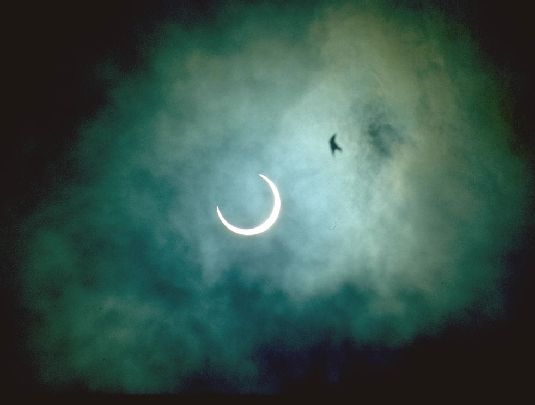
|
Credit & Copyright: Olivier Staiger
Explanation:
A
lunar eclipse can be viewed in a leisurely fashion.
Visible to anyone on the night side of
planet Earth (weather permitting), totality
often lasts an hour or so as the moon glides through the Earth's shadow.
But
a solar eclipse is more fleeting.
Totality can last a few minutes only
for those fortunate enough to stand in the path of the
Moon's shadow as it races across
the Earth's surface.
For the April 29, 1995 annular solar eclipse,
photographer Olivier Staiger
was standing in Macara, Ecuador under partially cloudy skies.
Just before the maximum annular eclipse phase he recorded
this dramatic moment as a bird flew near the sun.
The next solar eclipse,
on
June 10, will also be an annular one.
Partial phases will be
visible from eastern Asia, the
Pacific Ocean and much of North America.
Very accurate
predictions
of eclipses have long been possible.
|
January February March April May June July August September October November December |
| ||||||||||||||||||||||||||||||||||||||||||||||||
NASA Web Site Statements, Warnings, and Disclaimers
NASA Official: Jay Norris. Specific rights apply.
A service of: LHEA at NASA / GSFC
& Michigan Tech. U.
Based on Astronomy Picture
Of the Day
Publications with keywords: solar eclipse - eclipse - annular solar eclipse
Publications with words: solar eclipse - eclipse - annular solar eclipse
See also:
